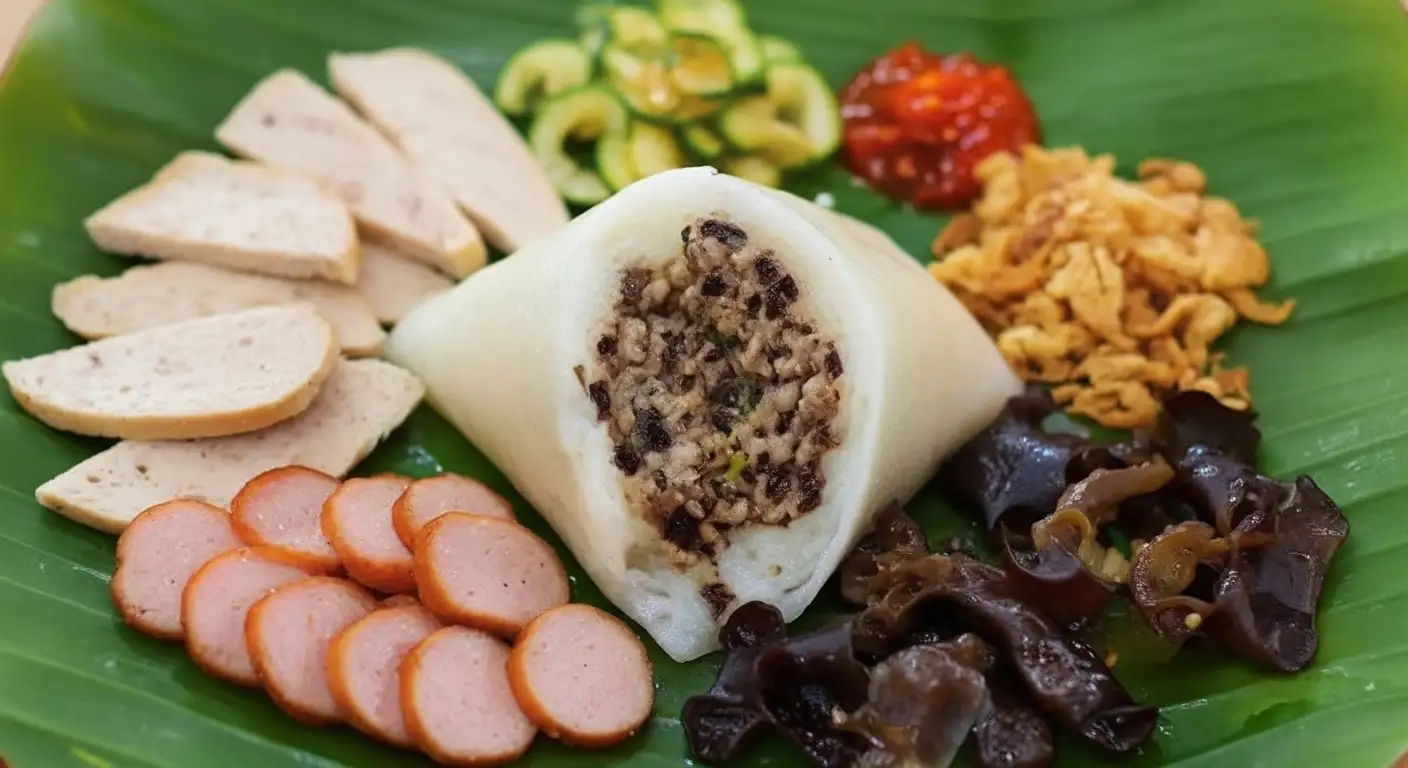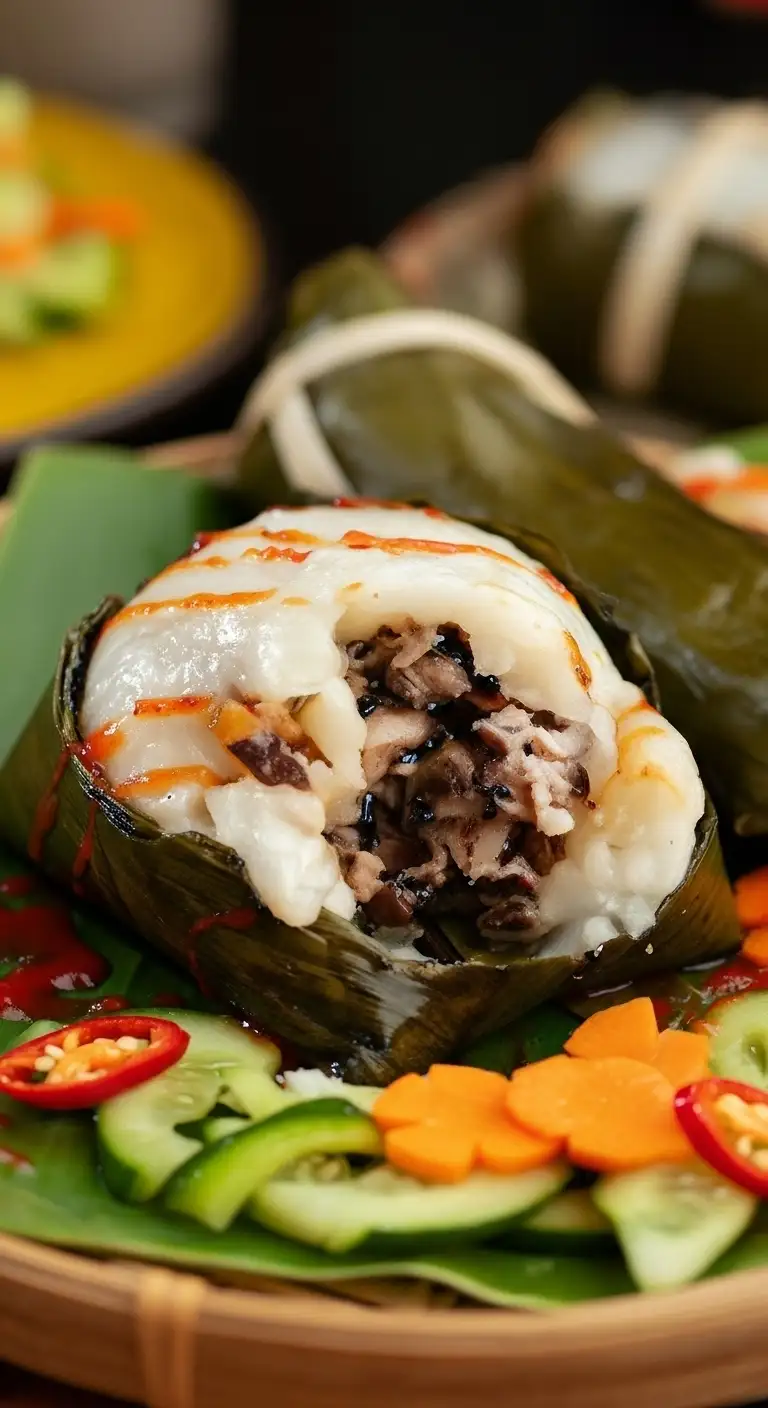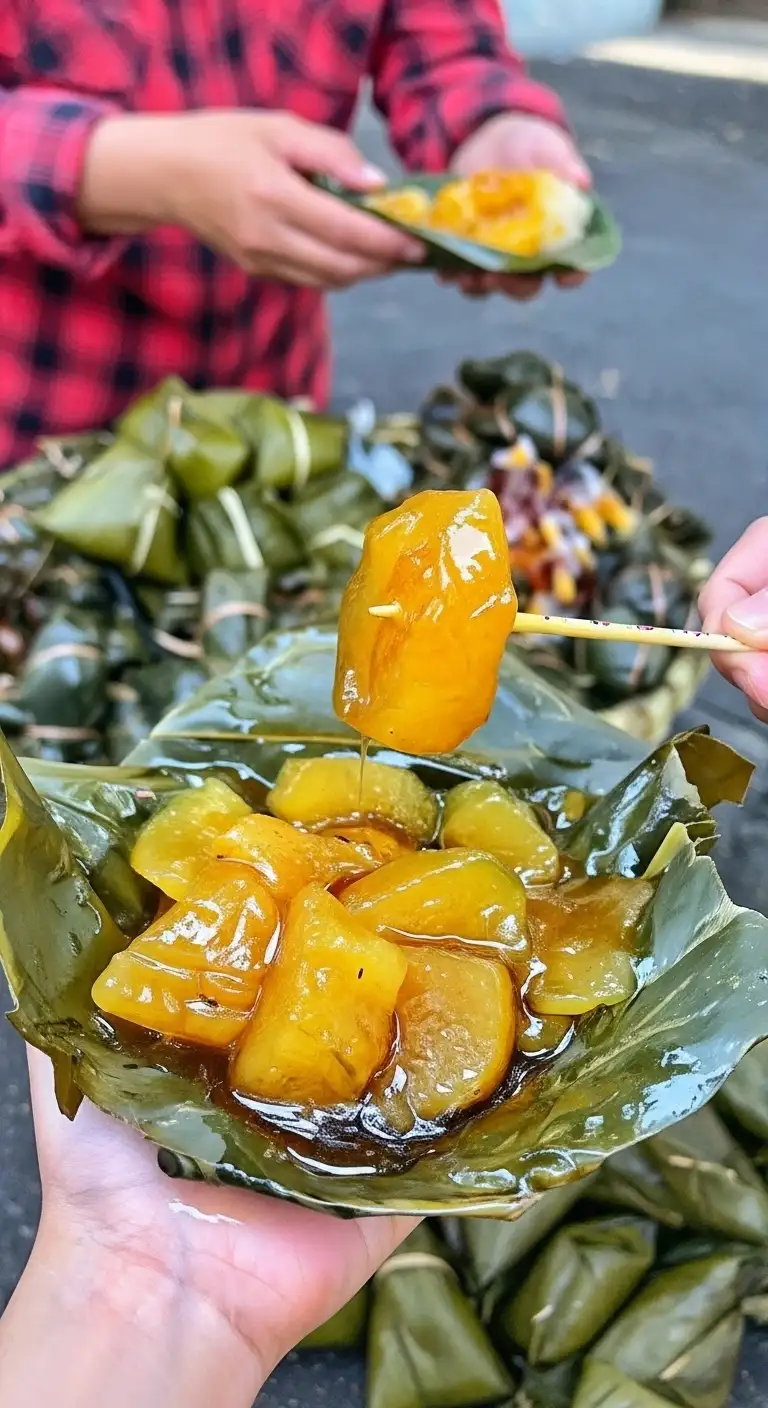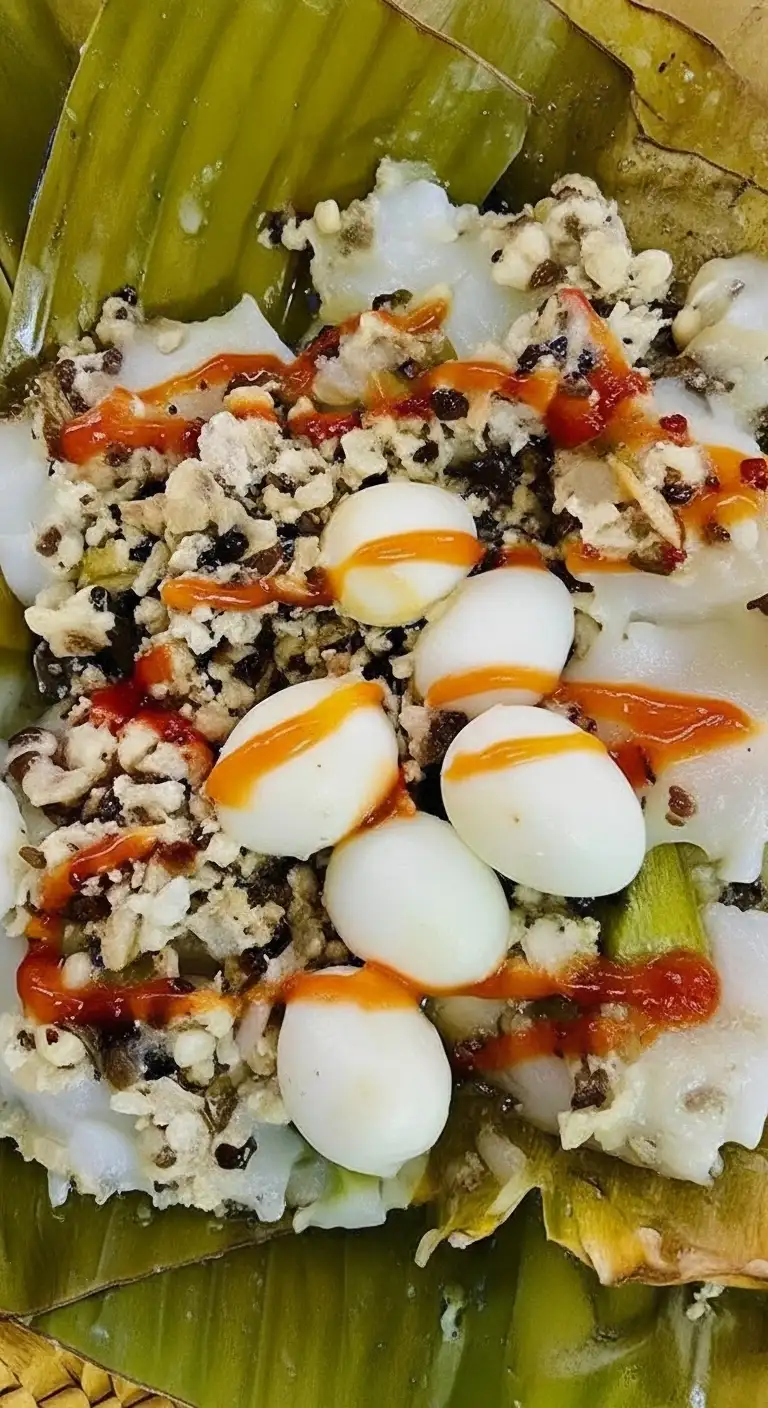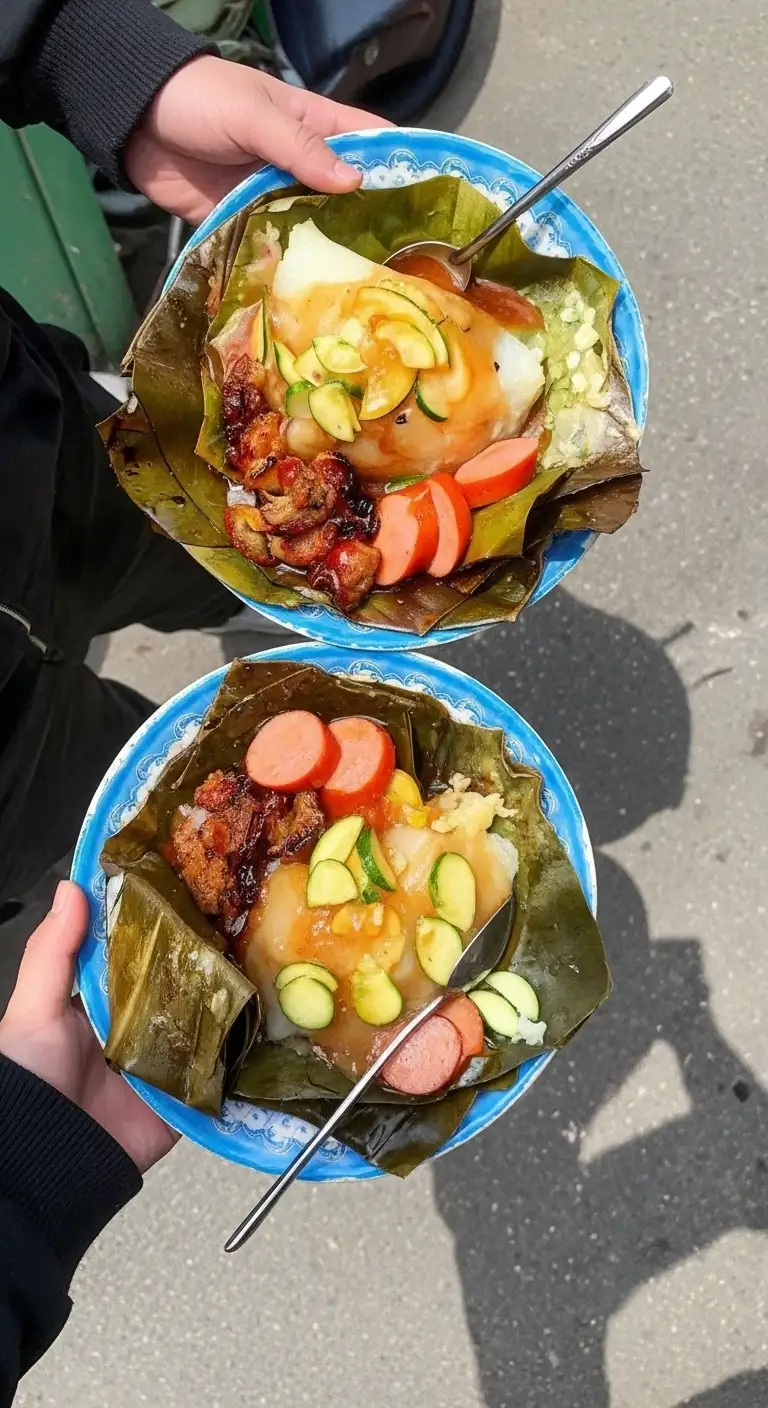Bánh Giò is a classic Vietnamese savory cake, often enjoyed as a comforting breakfast or a hearty street snack. Hailing from Northern Vietnam, particularly Hanoi, this dish is a beautifully simple, pyramid-shaped parcel that delivers warmth and satisfying, unpretentious flavor.
Wrapped in aromatic banana leaves, its appearance is as iconic as its soft, gelatinous texture. It’s a true taste of old Hanoi tradition.
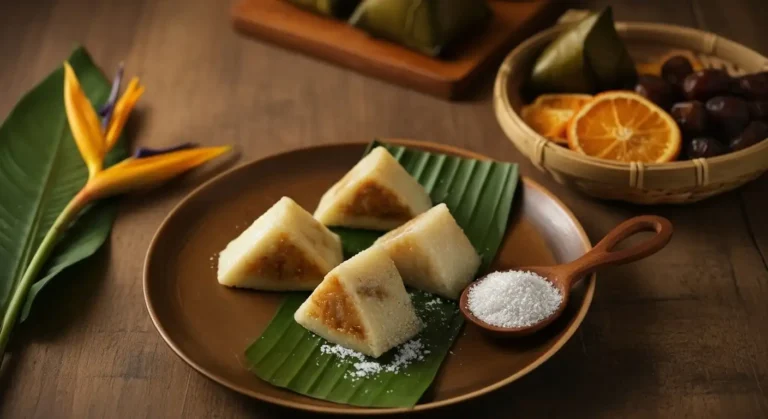
Bánh Giò: The Basics
The Wrapper (Outer Layer): The translucent, silky smooth, and slightly chewy exterior is made from a cooked paste of rice flour (bột gạo tẻ), which is sometimes mixed with tapioca starch or cornstarch for texture. Crucially, the flour is mixed with a rich pork bone broth or water and cooked until it thickens into a thick, paste-like dough before being wrapped.
The Filling: The savory core is a blend of:
Ground Pork: Seasoned with fish sauce, pepper, and sometimes bouillon.
Wood Ear Mushrooms (Nấm Mộc Nhĩ): Added for a delicate, crunchy texture that contrasts with the soft dough.
Onions/Shallots: Sautéed to add a fragrant aroma and savory depth.
Optional: Sometimes, a small, hard-boiled quail egg is tucked into the center of the filling.
The Preparation: The pork filling is placed in the center of the pre-cooked rice paste, and the whole assembly is meticulously wrapped in banana leaves to form a neat, pyramid or cone shape. It is then steamed until perfectly cooked, allowing the banana leaves to infuse the cake with a subtle, grassy aroma.
The Name: The name Bánh Giò is said to derive from Giò Lụa (Vietnamese pork sausage), as the filling was traditionally made from leftover scraps of pork used by professional Giò makers.
Varieties of Bánh Giò
Bánh Giò is a dish highly defined by its Northern origins, and as such, it does not have a wide range of structural variations like Bánh Xèo. The main “varieties” are found in the added toppings or the quality of the ingredients.
| Variety/Style | Key Feature | Description |
|---|---|---|
| Bánh Giò Truyền Thống | Traditional Plain | Served hot, plain, and simple, with only the pork, wood ear mushroom, and rice paste wrapped in the banana leaf. |
| Bánh Giò Trứng Cút | With Quail Egg | The most common upgrade, featuring one or two hard-boiled quail eggs nestled in the meat filling. |
| Bánh Giò Thập Cẩm | Mixed" Toppings | Often sold from street carts, this is a heartier meal topped with savory additions like Chả Lụa (steamed pork roll), Giò Tai (pig ear sausage), or Nem Chua (fermented pork sausage). |
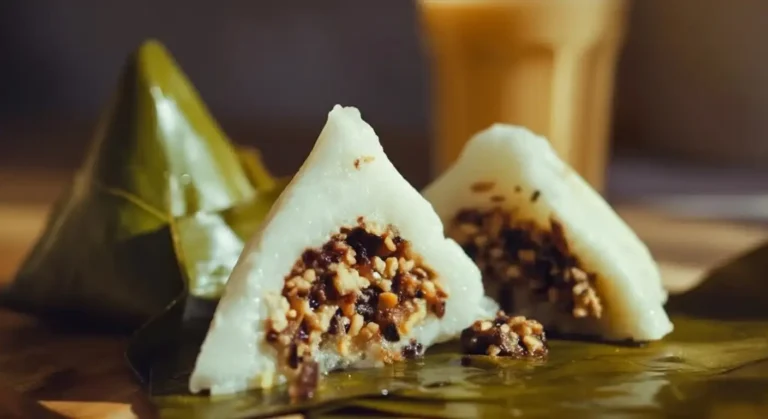
How to Eat Bánh Giò
Bánh Giò is served hot and usually eaten as a standalone meal. It’s designed for simple, quick consumption, often right out of the banana leaf.
Unwrap: Carefully peel back the banana leaf wrapper. The steam will have made the inner dough soft and glistening.
Topping (Optional): Many people simply eat it plain to savor the purity of the pork broth-infused rice dough and the savory filling. However, popular garnishes and sauces include:
Chili Sauce (Tương Ớt): A quick drizzle of sweet chili sauce for heat.
Soy Sauce or Maggi Seasoning: A light splash to enhance the umami.
Fried Shallots (Hành Phi): Sprinkled on top for crunch and aroma.
Fork or Spoon: Because of its soft, almost melt-in-your-mouth texture, Bánh Giò is best eaten with a spoon, scooping up the soft rice cake and the savory filling together.
As a Complete Meal: When served as a larger meal, especially in Hanoi, it is plated with thick slices of Vietnamese ham (Chả Lụa or Giò Lụa), sliced cucumber, and sometimes a simple dipping sauce (Nước Mắm) on the side.
Regional Differences
Bánh Giò is predominantly a Northern Vietnamese dish. While it is sold throughout Vietnam, its original and definitive style is associated with Hanoi, and the core differences across the country are subtle.
| Region | Primary Style/Focus | Key Regional Difference |
|---|---|---|
| North (Hanoi) | Traditional, refined, and subtle. The defining style. | Focuses on a lighter, less heavily seasoned flavor. The quality of the pork stock in the dough is paramount. Often eaten plain or with minimal sauce, emphasizing the purity of the dough and meat filling. |
| Central (Miền Trung) | Less common, often adopting Northern traits. | The Central region has its own array of savory cakes (Bánh Nậm, Bánh Bột Lọc). When Bánh Giò is made here, the overall flavor profile might be slightly saltier or spicier to match the Central palate. |
| South (Saigon/Mekong Delta) | Common, but adapted to Southern taste. | The Southern version often uses more aggressive seasoning in the filling and may incorporate a touch of sugar (reflecting the Southern preference for sweetness). It is also more likely to be served with a wider variety of richer toppings and a heavily customized Nước Chấm dipping sauce. |
